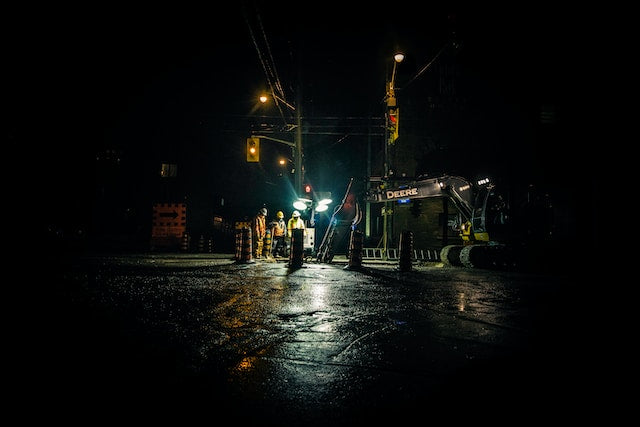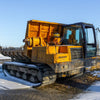Hi-Vis 101: What is there to know?

From operating heavy machinery to laying tarmac on a motorway, myriad jobs expose workers to potentially dangerous situations. As such, it’s advisable that workers in these roles wear high-visibility garments such as hi-vis jackets and hi-vis trousers.
For many roles, wearing hi-vis clothes is essential, as it helps workers to remain visible in low-light or risky working conditions. Wearing hi-vis is particularly pertinent in the UK, as poor visibility is common throughout the winter months.
What is high visibility clothing?
Hi-vis clothing is a type of PPE that includes reflective areas to help improve the wearer's visibility. The visibility strips on the clothing are often set against contrasting or bright colours. As such, the risk posed by vehicles or equipment operators is reduced, as operators are able to see workers.
When should hi-vis be worn?
According to HSE, high visibility clothing should be worn in all construction areas where vehicles or heavy machinery are in operation. Both ground workers and drivers need to ensure they’re doing so.
HSE also stipulates that workers on a construction site must follow their company’s hi-vis policy and that the employer should provide the appropriate garments.
Some construction workers, temporary traffic management workers, are required to wear a higher standard or hi-vis as they’ll be working near vehicles moving at high speeds and so need to be visible from a greater distance.
What are the different standards of hi-vis clothing?
Hi-vis clothing is regulated by ISO 20472 legislation, which sets out the conditions in which higher visibility garments must be worn. Here are the three different classes:
- Lowest protection level: These garments are suitable for situations where high visibility is more of a preference than a necessity, such as in environments where risks are minimal. The garments should be designed with reflective strips that are at least 50mm wide. Additionally, the total area covered by these reflective materials should be no less than 0.13 square meters, and the overall background surface area of the garment should be at least 0.5 square meters.
- Intermediate protection level: Those working on or near roads or in moderate-risk environments should wear class 2 hi-vis garments. The required design includes reflective strips that are at least 50mm wide. For class 2 garments, the reflective material should cover an area of at least 0.13 square meters, and the background of the garment should have an area of at least 0.5 square meters.
- Highest protection: Individuals who work on or near dual carriageways or motorways should wear high visibility clothing that meets Class 3 standards. The standards dictate that the retroreflective bands must be at least 50mm wide. The area covered by the reflective material must be no less than 0.2 square meters, and the background material must cover an area of at least 0.8 square meters.






